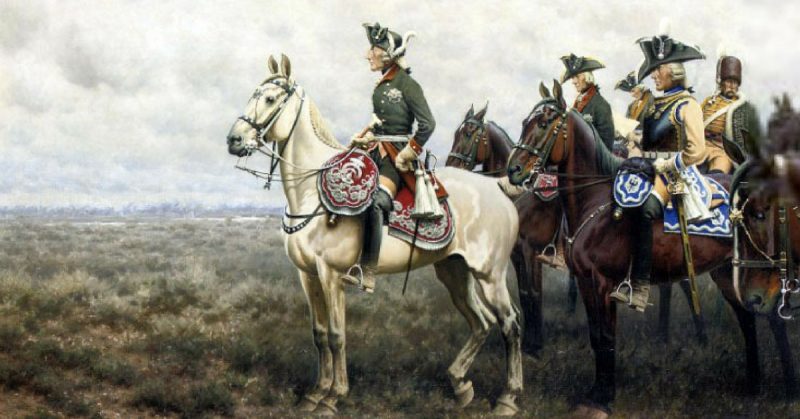The snow muffled all sound save the moan of the wind. The winter skeletons of trees showed black against the blank canvas. Grey sky heavy with iron clouds loomed still above. Looking north and west, a range of low hills. Due north, the little town of Leuthen, its population fled.
Scattered around Leuthen, a number of other small mining and farming villages, similarly deserted. Eleven miles to the west lay the war-torn capital of the province of Silesia. Today this is called Wrocław, in Poland, but in early December of 1757 the city’s name was Breslau, and it had just been captured by the Prince Charles II of the great Austrian royal house of Hapsburg-Lorraine. Breslau was now under the control of the Austrian Empire.
Charles had captured the city with an army more than sixty thousand strong; troops of the line, light infantry, quick moving cavalry and a battery of more than two hundred cannons. Breslau had been taken, but Charles now faced a new challenge, and he had placed his army to the West of the city to meet it.
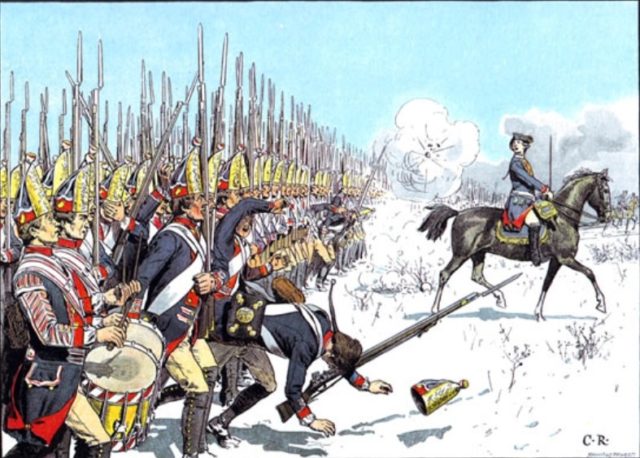
Into the muffled silence of the white plain there came a steady sound of drumbeats. From the West in the shelter of the hills a splash of color emerged from the fog, then another. Rich blue coats and tall hats of bright gold, flashes of yellow, bursts of red and splashes of pale cream. Polished black leather shone through the gloom.
Here was the rich nut brown of rifles carried proudly, a glint of light on the sharp, cold points of bayonets. Under the steady drum there could be heard the clink of gear and the creak of leather and in the crisp and unmarked snow the synchronized crunch of many booted feet. Two columns of infantry, fifty men abreast, progressed slowly into view, marching eastward.
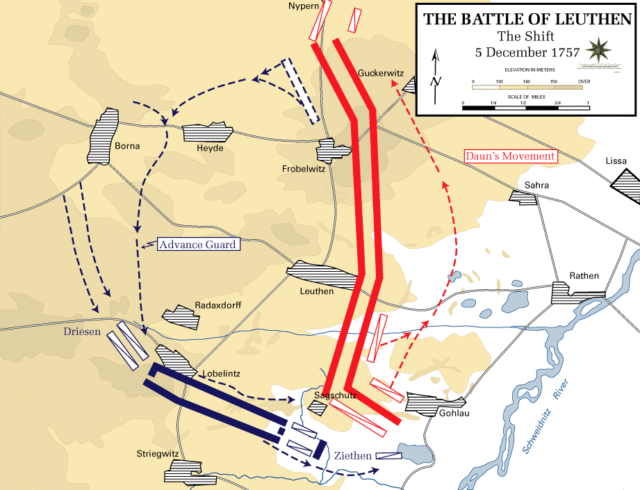
Screening the columns on their left-hand side, lines of light, fast moving cavalry scouting back and forth. On the right, screened by the infantry columns, cannon after cannon after cannon, pulled by men on sturdy horses. The hot breath of tens of thousands of men and horses smoked and steamed in the freezing air.
This was the army of the Kingdom of Prussia under the direct command of her king, Frederick II, called Frederick the Great. Frederick was the consummate soldier-king, a great general with many victories – as well as some notable defeats – in his career. His soldiers were the product of a century of sustained and rapid training and development, paralleling the swift expansion of Prussian-controlled territory on the northern European landmass.
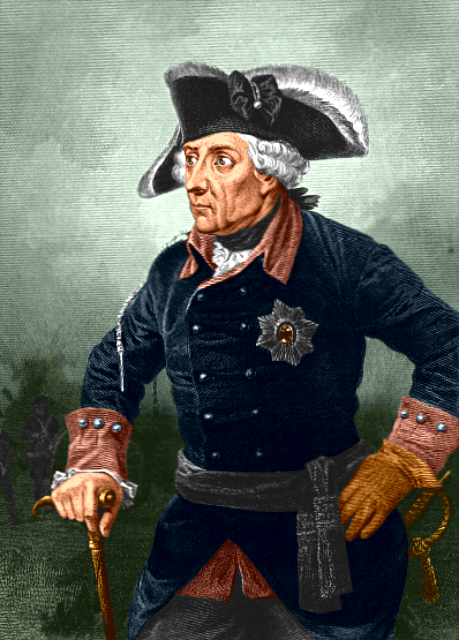
Including Frederick, three generations of Prussian kings had given their close attention to military affairs. By the time Frederick II the Great marched at Leuthen, the precision and discipline of his troops was without peer. Even Rome at the height of her ancient power, thought Frederick, could not show so well as this. He rode with his staff in the midst of his cavalry, a powerful figure physically, but dressed without ostentation, with practicality and speed in mind; just a cavalry officer. Messengers rode near him, ready to speed his orders to any point in his army at a moment’s notice.
He was a learned and practiced tactician and strategist. In 1757, Frederick was in his mid-forties, as was his opponent on this early day in December. Upon hearing news of Frederick’s arrival in Silesia Charles had arrayed his huge force in a line facing west. The line stretched fully four miles long from north to south with the hope of guarding against a fast flanking maneuver by the Prussians. Charles’ army outnumbered Frederick’s two-to-one, and they both knew it.
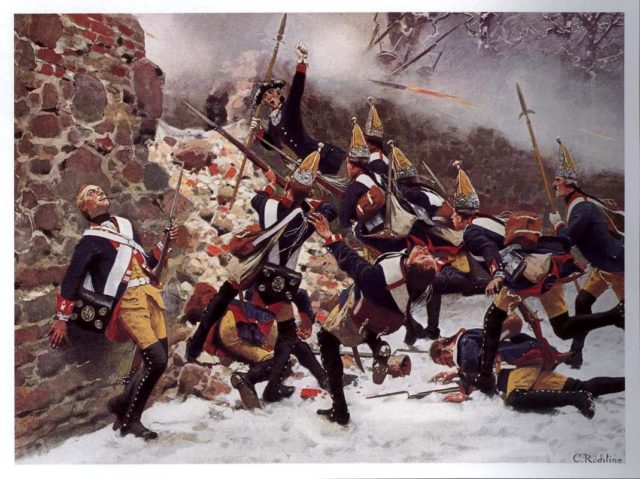
Unlike Frederick, Charles had chosen the high chamber of the church tower in Leuthen as his command post. From here he had watched the Prussians tentatively engage the far right of his line before withdrawing beyond the range of low hills which stretched from north to south across his view. It seemed like a feint to gauge his strength.
Charles felt confident that Frederick would not be prepared to engage his vastly superior numbers, but he would not withdraw just yet. He gave orders to hold the position and to move his reserve force to bolster the right flank. The orders, written and sealed, were passed to a runner who sped to the bottom of the stair. He passed them to a horseman, who flew toward the reserve camp.
In due course, Charles could observe his troop’s maneuver from his high tower. As the dark mass of men moved steadily north to bolster the right flank he looked in vain for a sign of his enemy. He did not show it, but he felt both disappointment and relief. Frederick had withdrawn.
But Frederick had not withdrawn. A quick march in the shelter of the hills brought his columns beyond the far left flank of Charles’ army at about the same time as Charles’ reserve was completing its maneuver to strengthen their right. By the time the Prussians had been spotted they were already forming into battle order at a right angle to the Austrian right flank.
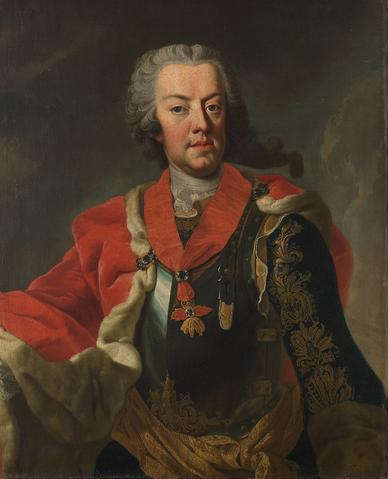
By the time the messenger reached the foot of the tower the first volleys of rifle fire from the swiftly advancing line infantry were ripping into the muffled silence of the plain. As the messenger gasped out his report and Charles glared from his window with a face like thunder, the Prussian artillery could be heard delivering their opening volleys.
It was a simple tactic, really, thought Frederick. The discipline and speed of his troops had allowed him to carry it out swiftly and flawlessly, but the move itself was neat and simple. This simplicity pleased him immensely. Feint, three left turns, a swift advance. The Prussians moved smartly toward the Austrian right flank, firing by the line, advancing then firing again.
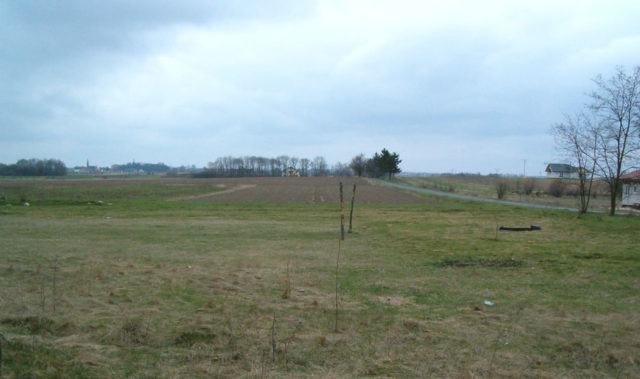
Their opponents returned ineffective fire and then broke and fled north. Behind them the artillery barrage became relentless, but they had swept up the collapsing Austrian line almost as far as the village before Charles’ cannon could be brought effectively to bear. Cavalry and infantry were scrambled toward the advancing Prussians, but the artillery delivered a devastating barrage anywhere that the Austrian army began to form a cohesive line of battle.
Disorder was spreading along the Austrian line. The units which moved south congregated on the village of Leuthen where they made a determined stand, but Charles, seeing the dark blue jackets of the Prussian infantry closing in swiftly, had removed hastily from the tower and the town.
The Austrian and Prussian cannon made such a noise as to make the very ground shake, as volley after volley was exchanged, but the Prussian force could not be deterred. In less than an hour, it was all over, the village was taken, and the huge Austrian army routed or captured. Frederick the Great was victorious.
By Barney Higgins
